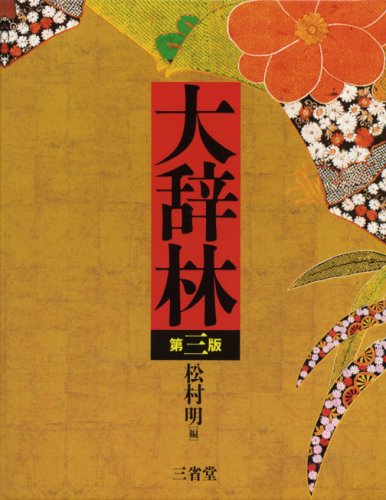1 0 0 0 IR 大学間連携によるICTを活用した協働的学びの実践と検討
- 著者
- 小田 奈緒美 淺野 卓司 江島 徹郎 小谷 健司 高橋 岳之
- 出版者
- 愛知教育大学
- 雑誌
- 愛知教育大学教職キャリアセンター紀要 (ISSN:24240605)
- 巻号頁・発行日
- vol.1, pp.93-100, 2016-03-31
本研究の目的は、異なる大学、異なる学習歴を持つ学習者が、協働してICTを活用した学びの実践を通して得られる効果を検討することである。筆者らは、主に2014年度から、教員や保育士の養成の高度化を目指して、愛知教育大と桜花学園大の「協働授業」を実践してきた。まず学部での授業を対象に行い、次に修士レベルでの開講を目指した。2つの大学は離れているので、テレビ会議システム等のICTを活用し、また異なる大学の学習者が同じ体験型学習を共同で行う等し、直接会う機会も設けた。体験型学習は小学校の公開授業への見学とした。これら協働的学びの実践よって、主に以下の3つのことが強く示唆された。(1)学習者は、多様な考え方への気づきがあったことが強く示唆された。これは、異なる大学、異なる学習歴での協働授業による意見交換によるものと考えられ、協働的学びによる効果であると推測できる。(2)一方で、学習者は、協働的学びにおいて、それぞれに共通すると考えられる体験を前提とすることが必要であると考えられた。学習者は、これら共通する体験以外の議論はほぼできなかった。(3)テレビ会議システム等のICTの活用は、ある程度有効に機能した。機器に不調があり、活用できなかった授業の学習者の評価が低かったこと等から推測できる。しかし、こうした不調は、機器の運用等に問題があることも示唆している。異なる大学が連携してのICTを活用した協働的学びには、一定の範囲での効果が期待できることが強く示唆された。
1 0 0 0 水稲の移植期、移植法が収量、品質及び食味関連形質に及ぼす影響
- 著者
- 浅野 真澄
- 出版者
- [東北農業試験研究協議会]
- 雑誌
- 東北農業研究 (ISSN:03886727)
- 巻号頁・発行日
- no.62, pp.17-18, 2009-12
宮城県における移植時期は5月の連休中に集中し、障害不稔による冷害や出穂期の高温による品質低下などが懸念されていた。そのため、これらの改善を目的に移植を5月15日以降に行う晩期栽培を推進しており、移植時期盛期の県平均も5月9日と徐々にではあるが遅くなり始めている。また、「ササニシキ」においては、移植時期の違いによる収量の差は小さく、移植時期が遅いほど外観品質が良くなる傾向のあることが報告されている。そこで今回は、「ひとめぼれ」における晩期栽培が品質に与える影響や、収量を普通期移植と同等に維持するための移植方法等について検討した。
1 0 0 0 オノマトペと韻を踏んだ動詞を用いた文章の自動生成
- 著者
- 古賀祐太 横井健
- 雑誌
- 第76回全国大会講演論文集
- 巻号頁・発行日
- vol.2014, no.1, pp.137-138, 2014-03-11
オノマトペとは、擬音語・擬声語・擬態語の総称で、物事を感覚的 に伝えることが可能な言葉である。物事を表現する際にオノマトペ を使用することで、そのニュアンスを相手により分かりやすく伝える ことが出来る。またそれに加えて、動詞とその動作のニュアンスを 表現するオノマトペが韻を踏んでいる場合、文章全体の語呂が良くなり、 相手が伝えたい物事のニュアンスをより理解しやすくなると考える。 そこで本研究では、動詞とオノマトペの音の近さと、意味の近さに着目して、 それら両方が近いオノマトペと動詞を用いた文章を自動生成することを目的とする。
1 0 0 0 いし・かわら・つぶてのごとくなるわれら
- 著者
- 安富 信哉
- 出版者
- 大谷大学真宗学会
- 雑誌
- 親鸞教学 (ISSN:05830567)
- 巻号頁・発行日
- no.55, pp.p37-52, 1990
1 0 0 0 志度寺(讃岐)--新古寺巡礼-59-
- 著者
- 佐藤 昭夫
- 出版者
- 東京国立博物館
- 雑誌
- 東京国立博物館研究誌 (ISSN:00274003)
- 巻号頁・発行日
- no.92, 1958-10
1 0 0 0 志度寺縁起--御衣木縁起と漂着神について
- 著者
- 谷原 博信
- 出版者
- 四国民俗学会
- 雑誌
- 四国民俗 (ISSN:1343733X)
- 巻号頁・発行日
- no.31, pp.58-66, 1998-02
1 0 0 0 IR 志度寺縁起絵考
- 著者
- 南谷 敬 Minamitani Kei ミナミタニ ケイ
- 出版者
- 大阪大学大学院文学研究科
- 雑誌
- 待兼山論叢 (ISSN:03874818)
- 巻号頁・発行日
- vol.14, pp.p1-30, 1980
1 0 0 0 IR 珠取説話の伝承圏 : 志度寺縁起と南都・律僧勧進
- 著者
- 大橋 直義
- 出版者
- 慶應義塾大学
- 雑誌
- 藝文研究 (ISSN:04351630)
- 巻号頁・発行日
- vol.80, pp.43-66, 2001-06-01
はじめに一、広義の興福寺縁起説二、珠取説話と「舎利」招来説話三、珠取説話の律僧唱導圏小括、志度寺における珠取説話の意味
1 0 0 0 讃岐志度寺縁起と長谷寺縁起
- 著者
- 逵 日出典
- 出版者
- 大正大学
- 雑誌
- 日本仏教史学 (ISSN:03855805)
- 巻号頁・発行日
- vol.25, pp.20-41, 1991-03
1 0 0 0 絵金
- 著者
- 絵金蔵監修
- 出版者
- パルコエンタテインメント事業局出版担当
- 巻号頁・発行日
- 2009
- 著者
- 国立文楽劇場営業課編
- 出版者
- 日本芸術文化振興会
- 巻号頁・発行日
- 2016
1 0 0 0 日本伝奇伝説大事典
- 著者
- 乾克己 [ほか] 編
- 出版者
- 角川書店
- 巻号頁・発行日
- 1986
1 0 0 0 生写朝顔話 . 花上野誉碑
- 著者
- .
- 出版者
- NHKエンタープライズ
- 巻号頁・発行日
- 2016
1 0 0 0 四国遍路ひとり歩き同行二人 : 空海の史跡を尋ねて
- 著者
- 宮崎建樹著 へんろみち保存協力会編
- 出版者
- へんろみち保存協力会
- 巻号頁・発行日
- 2007
1 0 0 0 志度寺の「当願暮当之縁起」について
- 著者
- 長谷川 隆
- 出版者
- 香川高等専門学校
- 雑誌
- 香川高等専門学校研究紀要 The bulletin of Kagawa National College of Technology (ISSN:21852391)
- 巻号頁・発行日
- no.7, 2016-06
- 著者
- 松岡 心平
- 出版者
- 岩波書店
- 雑誌
- 文学 (ISSN:03894029)
- 巻号頁・発行日
- vol.11, no.1, pp.34-42, 2010-01
- 著者
- 三角 治
- 出版者
- キハラマーケティング部
- 雑誌
- Lisn : Library & information science news (ISSN:13418106)
- 巻号頁・発行日
- no.152, pp.9-12, 2012
1 0 0 0 地球にも町財政にもエコなまちづくり 有田川町
- 著者
- 有田川町役場 環境衛生課
- 出版者
- 一般社団法人 日本風力エネルギー学会
- 雑誌
- 風力エネルギー (ISSN:03876217)
- 巻号頁・発行日
- vol.40, no.3, pp.405-407, 2016
1 0 0 0 IR エスニシティの研究 : 中国の民族に関する私の研究と見解
- 著者
- 費 孝通[著] 塚田 誠之[翻訳]
- 出版者
- 国立民族学博物館
- 雑誌
- 国立民族学博物館研究報告 (ISSN:0385180X)
- 巻号頁・発行日
- vol.22, no.2, pp.461-479, 1997
For sixty years, the author has been engaged in the study of ethnicgroups in China. This paper represents an attempt to provide an overallview of his personal experiences in this field which in turn sheds light onthe ways in which he has viewed ethnic identity. Prior to 1949, after havingbeen trained in the subjects of anthropology and sociology, theauthor started to conduct fieldwork in both Han and non-Han communities.After 1949, for the purpose of creating equality among all nationalitiesin China, the newly established People's Republic administereda major research program to identify ethnic groups within itsterritorial sovereignty. As a member of this program, the author was involvedin extensive nationality surveys. Through these surveys, he cameto realize that ethnic groups were shaped in the communal lives of theirmembers and transformative in time. This observation led the author toemphasize the significance of the social historical perspective inethnological studies.Even though the "Anti-Rightist Movement" and the "CulturalRevolution" deprived him of 23 years of academic life, the lessons ofethnic identification which he gained in the early fifties remained in theauthor's mind. In 1979, he re-started work among minority nationalities.Personal involvement in various research projects and in thepolicy-making process has made it possible to put forward a new argument.In 1989, summarizing his thoughts, the author put forword argumentthat China is an integrated nation with cultural diversity. In doingso, he had two criticisms in mind. On the one hand, he criticizes the ideathat one ethnic entity should be ruled by one independent state which haslegitimated various violent campaigns of ethnic separation in Europe.However, the author's own studies indicate that different ethnic groupshave lived together for centuries within China. Therefore, the Eurocentricdefinition of nation-state is not applicable in China. On the otherhand, historical studies of interrelationships among ethnic groups inChina have demonstrated that the Chinese nation was shaped through atwo-way process. From the bottom-up perspective, the history of theChinese nation is one through which diverse ethnic cultures and socialsolidarities became integrated into a higher level order. From the topdownperspective, the higher level order has never excluded lower levelethnic cultural systems. Such a two-way historical perspective offers acritique of those who attempt to draw a clear-cut demarcation line betweenthe Chinese nation and "other cultures" within it.


